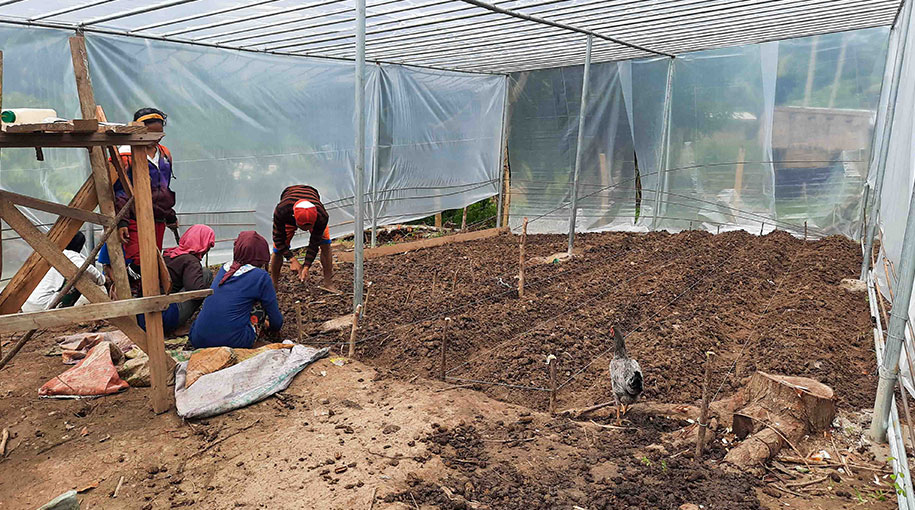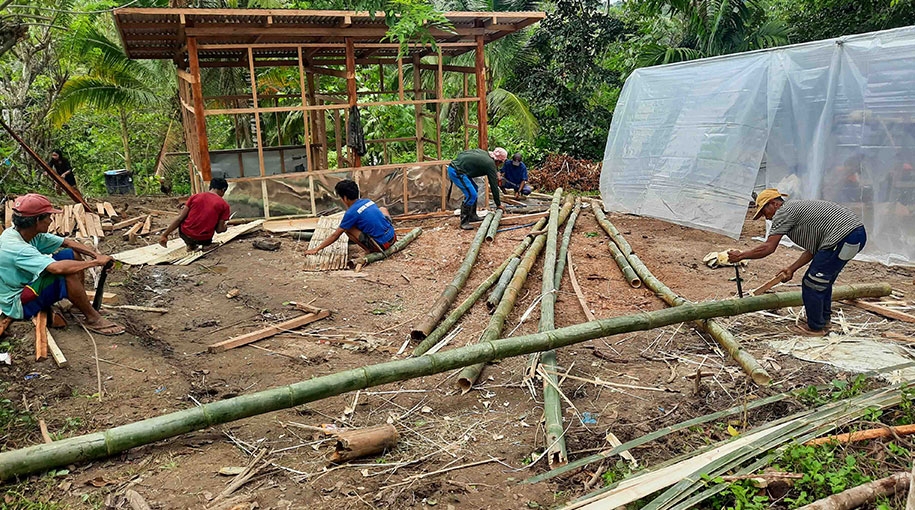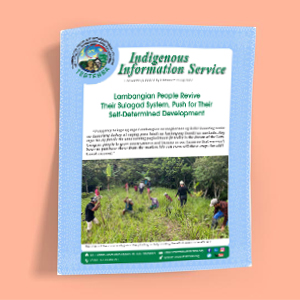“Pinaghirapan natin ang proyektong ito. Ipagpatuloy natin (We worked hard for this project. Let us pursue it).”
Ernald Datuwata, a Lambangian Peoples Organization (LPO) youth leader, stressed the importance of pursuing the revival of their sulagad system in a meeting conducted by LPO officers, elders, and youth leaders in sitio[1] Benuan, barangay[2] Kuya, South Upi, Maguindanao, Mindanao, Philippines during Tebtebba’s visit on 19 June to 5 July 2022.
In the said gathering, LPO officers, elders, and members discussed the initial experiences, challenges, and lessons learned from their ongoing revival of their sulagad system, a traditional farming system among the Lambangian and Teduray indigenous peoples in the southern part of the country that intentionally integrates various tree and crop varieties and animals into the farmed area which is, then, supplemented by the practice of hunting and gathering.
“There have been many attempts of the Lambangian community to revive the sulagad system in the past,” Roger Lambino, Tebtebba’s focal staff for the said initiative explained, “but based on their stories, sustaining the initiative has always been a struggle. For instance, backyard gardening required the constant maintenance of fences and the conscious effort to store seeds for the next planting season,” he remarked, also emphasizing the ill-effects of the introduction of genetically modified corn cultivation in the area. He, however, shared that the people now seemed more determined to pursue the said system’s revival in their community, a project that is being facilitated by Tebtebba with support from the Pawanka Fund.
Meanwhile, the installation of a corn mill and a rice mill is another Tebtebba-facilitated project in the indigenous community, accomplished through the Indigenous Navigator initiative in the Philippines with support from the European Union. Because corn farming is one of the main livelihoods among the Lambangian people of Benuan, LPO found it beneficial to have their own community corn mill as a kind of a supplementary, indigenous-led social enterprise. Currently, the installed equipment allows the community to do away with having to bring their raw corn produce to a commercial processing establishment located about eight kilometers away that, in turn, requires a sizeable fee per corn granulation. Setting up the rice mill has yet to be done, however, requiring more support for its completion.

Community members preparing the plots for the central nursery greenhouse.
While the sulagad system revival and corn-and-rice-mill projects both stress support for the Lambangian people’s sustained self-determined development, specifically towards the achievement of their collective food sovereignty and livelihood stability, Leticio Datuwata, LPO pioneer and Timuay Labi[3] of the Timuay Justice and Governance (TJG)—the traditional justice and governance system that governs both the Teduray and Lambangian indigenous peoples, emphasized that it is imperative to link such development to the global indigenous peoples’ advocacy. “We have plans for simultaneous clustered visitations among LPO members and with other indigenous groups which would, then, permit everyone to share about the direct impacts of and best experiences from the said sulagad revival initiative. Such an activity would also promote inter-group sharing of indigenous seeds and call for climate change mitigation and adaptation in a much wider scale,” the supreme leader conveyed.
To achieve such a powerful goal, it is, thus, essential to transform the Lambangian ancestral domain into a sustainable agro-ecological territory or sulagad—a significant upscaling that may take some years to accomplish. Addressing the different challenges that block the revival of agro-ecology in the indigenous territory is of prime importance for the Lambangian people to discuss.
(Banner photo: Preparing bamboo fences for the sulagad central nursery.)
-----
[1] Sitio (or purok) is a Filipino term that refers to a group of households within a barangay (See Endnote 2), used to designate specific geographic and/or territorial location especially for delivering services.
[2] Barangay refers to a small administrative and territorial unit of government which can, then, be further divided into puroks or sitios.
[3] Timuay Labi formally means “supreme leader,” a title bestowed on the highest leader of the Teduray and Lambangian peoples of Mindanao in line with their customary system of governance.



